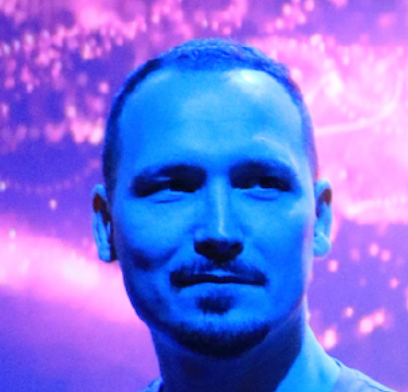#332 — October 2, 2020 |
💬 Very few tutorials out this week, so we've decided to skip that section and instead treat you to an interview with community member Mat Ryer which you can find at the end of this issue :-) |
Golang Weekly |

|
|
Developing Price and Currency Handling for Go — The creator of the Currency library reflects on its creation and the technical aspects of working with prices and monetary values in code. Bojan Živanović |
|
Ebiten v1.12.0 Released: The 2D Game Library, Now with a Go-Like Shader Language — Ebiten’s API is great for quickly developing 2D games for multiple platforms, all within Go, and this latest version lets you write custom shaders in Kage, a Go-esque shader language. Hajime Hoshi |

Learn How to Move Fast From Code to Kubernetes — Get our free eBook - “CI/CD with Docker and Kubernetes eBook”. Learn how to deliver high-quality cloud apps rapidly and consistently. Semaphore sponsor |
|
GoLand 2020.3 Early Access Program Starts — It’s a commercial IDE but it polls as popular with Go developers so we thought we’d share the news especially as it’s free to use during EAP. Improved debugging, table test support, and drag and drop splitting are amongst the improvements here. Ekaterina Zharova (JetBrains) |
|
Faster Literal String Matching in Go — Ben, the creator of go-string, a set of useful string functions either unavailable or slower in the standard Go version, reflects on his approach to faster string matching. Ben E. C. Boyter |
|
💻 Jobs |
|
Sr. Software Engineer at CrowdStrike (Remote) — CrowdStrike is the leader in cloud-delivered endpoint protection, which helps protect our customers from cybersecurity attacks. CrowdStrike |
|
Principal Engineer (SF/Remote) — Come be a leader here. Raise the bar. We're changing user behavior in an entire industry and need strong engineers to join up. Shift |
|
Find a Job Through Vettery — Create a profile on Vettery to connect with hiring managers at startups and Fortune 500 companies. It's free for job-seekers. Vettery |
🛠 Code & Tools |

|
|
duf: Think Christian Muehlhaeuser |
|
promptui: An Interactive Prompt for Command-Line Apps — Includes some elegant terminal-based controls like password entry, item selection, and a confirmation prompt. Manifold |
|
➡️ TimescaleDB for Go Developers Quickstart — Learn how to connect your Go apps to TimescaleDB (relational time-series database), run your first query & more. Timescale sponsor |
|
GOTK3: Go Bindings for GTK3 — To get the most out of this you will already want to be familiar with developing for GTK3 (the cross platform widget/GUI toolkit). gotk3 |
|
rqlite 5.5: A Distributed Relational Database Built on SQLite — Think SQLite but turned into a ‘proper’ distributed database (using Raft consensus) and that’s what you get here. v5.5.0 adds support for parameterized SQL statements. rqlite |
|
sqlbench: Measures and Compares The Execution Time of SQL Queries — Only for Postgres right now, though pull requests for other databases are welcome. Written in Go. Felix Geisendörfer |
|
Reach Your Go App Users Anywhere with Video That Streams Beautifully, Everywhere Mux sponsor |
|
🇯🇵 Kagome v2: A Japanese Morphological Analyzer — I don’t understand this, but if you speak Japanese and you have some Japanese words you need to break apart, maybe you will 😄 ikawaha |
|
ko 0.6: Build and Deploy Go Apps on Kubernetes |
|
Jitterbug: Tickers with Random Jitter — Louis Thibault |
🗣 Interview |
|
